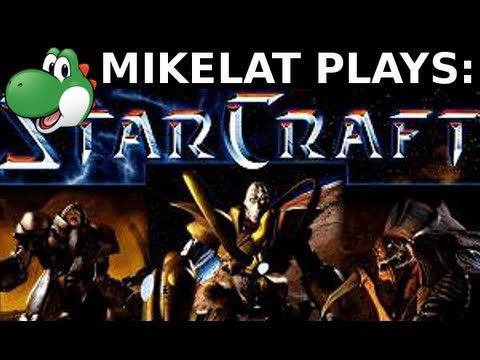From our WIKI section.
Did you know that ……. ???
Starcraft Heroes – Zasz
Zasz was one of the Cerebrates created by the Overmind from its own consciousness to command the different Broods of the Zerg. During the Great War, Zasz advised a new Cerebrate produced to safeguard the chrysalis holding Sarah Kerrigan.
Planets Starcraft – Tarsonis
On the planet Tarsonis landed the gigantic supercarrier Nagglfar, one of the four colony ships carrying Terrans to the Koprulu sector. Because the Nagglfar had led the flotilla, on board was the supercomputer ATLAS, which had guided all four ships on their eighty-two-year voyage.
Starcraft Units – Mule
The Mobile Utility Lunar Excavator (MULE) is a temporary unit that can mine minerals (not gas) and repair for the Terran forces. MULEs are called down from the Orbital Command at the cost of 50 energy. They last 64 seconds. If the MULE is cast on a mineral patch it will begin to mine minerals as soon as it spawns.
Starcraft Missions – Evolution of Roaches
Nine of the thirteen Terran colonial worlds now lie in ruins. The Protoss expeditionary force has largely retreated, and Emperor Mengsk is attempting to resurrect a new empire in the ruins of the Terran Confederacy.
Starcraft Buildings – Gateway
The Gateway is a unit production structure for the Protoss, responsible for warping in ground units. Gateways can be warped in by a Probe only within range of the Psionic Matrix, and only if the player controls a Nexus. Like most Protoss structures, the Gateway can only function if it remains within the Matrix, otherwise it becomes unpowered.
Follow us and check out our social media accounts on Twitter, Facebook & YouTube ►
● on Twitter ► esport.directory
● Facebook ► esport.directory
● Youtube ► esport.directory
Starcraft
Starcraft is a turn-based game. The active player receives the obligatory first player token, so it should always be clear whose turn is being played, and especially interesting: StarCraft does not require any dice at all.
To get started, you first have to agree on your faction, then gather all the necessary figures, cards and tokens of your faction (woe betide the game master who only starts sorting now!) and leave the table in the middle free, as this is where the galaxy, i.e. the playing field, is built.
This proceeds similarly to Twilight Imperium.
Each player draws two planet tokens, which they can use to pick their planets from the planet stack. This step is necessary because the planet cards are shaped differently and the tokens are the only way to ensure that the drawing is random.
The starting player then places his first planet in the center of the table and can already build a base – but he doesn’t have to, then he has to do it on his second planet as soon as he lays it out.
Once the first planet is in place, it is the next player’s turn to lay out his first planet and connect it to the previous player’s planet with a navigation route cardboard piece. The last player may lay out both planets at the same time and then it goes in reverse order to the starting player. This way a more or less interconnected galaxy is created.
Finally, Z-axes are laid, which are navigation routes across loose ends, sort of a 3D conversion.
Each player receives the corresponding resource cards for his two planets and then only the event cards are reduced according to the number of players, shuffled and placed on the board. There are three event card phases, which is symbolized by different card backs and should help the game to become faster and more powerful towards the end. Now the game can start.
Each round is divided into three phases.
Starcraft is a turn-based game. The active player gets the obligatory first player token, so it should always be clear whose turn is being played, and most interestingly, StarCraft doesn’t require any dice at all.
To get started, you first have to agree on your faction, then gather all the necessary figures, cards and tokens of your faction (woe betide the game master who only starts sorting now!) and leave the table in the middle free, as this is where the galaxy, i.e. the playing field, is built.
This proceeds similarly to Twilight Imperium.
Each player draws two planet tokens, which they can use to pick their planets from the planet stack. This step is necessary because the planet cards are shaped differently and the tokens are the only way to ensure that the drawing is random.
The starting player then places his first planet in the center of the table and can already build a base – but he doesn’t have to, then he has to do it on his second planet as soon as he lays it out.
Once the first planet is in place, it is the next player’s turn to lay out his first planet and connect it to the previous player’s planet with a navigation route cardboard piece. The last player may lay out both planets at the same time and then it goes in reverse order to the starting player. This way a more or less interconnected galaxy is created.
Finally, Z-axes are laid, which are navigation routes across loose ends, sort of a 3D conversion.
Starcraft Gameplay, Starcraft Rankings, Starcraft Release Date, Starcraft Carrier, ‚ Starcraft Cover, Starcraft Skins, Starcraft Videos, Starcraft Video YouTube, Starcraft PS4, Starcraft Platforms, Starcraft Players, Starcraft Team,




